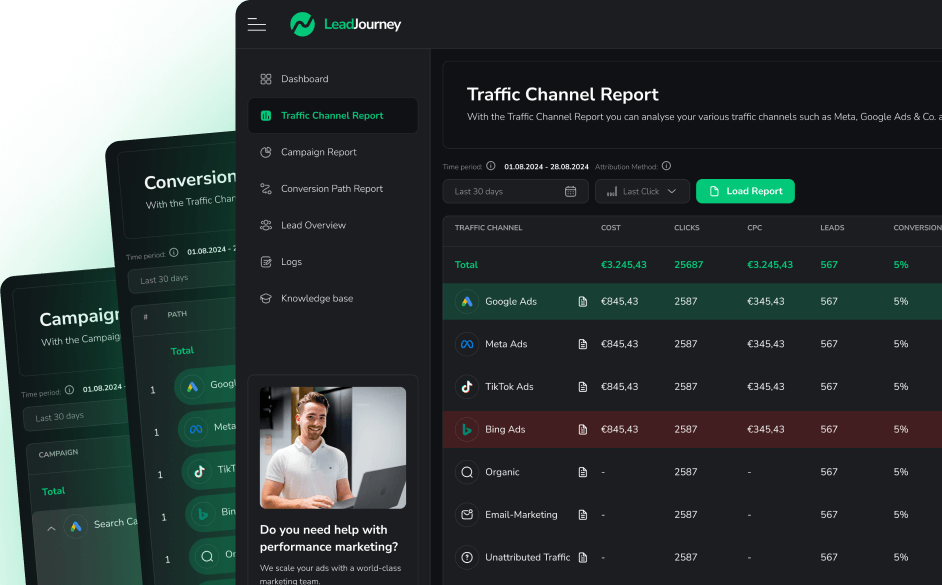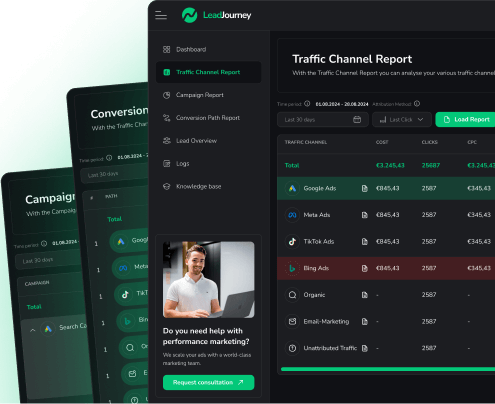Last Click Attribution is a common attribution model in digital marketing that assigns 100% of the credit for a conversion to the last channel or ad a user interacted with before making a purchase or completing a desired action. It is one of the simplest and most widely used models for tracking how marketing efforts lead to conversions, offering a clear and straightforward way to measure the final touchpoint in the customer journey.
How Last Click Attribution Works
In a last click attribution model, when a user engages with several marketing channels (e.g., seeing an ad, receiving an email, or clicking on a search result), only the final interaction before the conversion is given full credit. For example, if a user clicks on a Google ad, later clicks through an organic search result, and finally makes a purchase after clicking on a retargeting ad on Facebook, the last touchpoint—the Facebook ad—would be credited with the conversion.
This model is particularly easy to implement and understand, as it provides a direct correlation between the last marketing effort and the resulting conversion. However, it does not account for any earlier touchpoints that may have influenced the customer’s decision.
Track your lead campaigns with 95% data accuracy and scale your marketing effortlessly.
love LeadJourney
Limitations of Last Click Attribution
While last click attribution offers simplicity, it has some limitations in capturing the full customer journey. It ignores the contribution of other channels or touchpoints that may have played a critical role earlier in the funnel. For example, a user may have seen a display ad or visited the website via an email campaign, both of which helped build awareness before the final conversion, but these touchpoints receive no credit under last click attribution.
This model tends to overvalue channels that are closer to the point of conversion, such as retargeting ads or direct searches, while undervaluing channels that are used for awareness and consideration, such as display ads or social media.
How LeadJourney Helps Optimize Last Click Attribution
LeadJourney can help businesses track last click attribution while providing additional insights into the entire customer journey. By capturing data across all touchpoints, LeadJourney enables marketers to see not only the last click but also the interactions that preceded it. This gives a more comprehensive view of how different channels contribute to conversions, even if the last click receives the final credit.
LeadJourney also integrates CRM data with ad platform tracking, allowing businesses to trace both online and offline interactions. For example, a lead might interact with multiple touchpoints online before making an offline purchase. With LeadJourney, businesses can track the last click that led to the offline conversion and feed that data back to platforms like Google Ads or Facebook Ads for more accurate attribution.
Why Last Click Attribution Matters
Despite its limitations, last click attribution is still widely used due to its simplicity and ease of implementation. Here are some key reasons why it remains valuable:
- Clear Conversion Path: Last click attribution provides a straightforward view of the final action that drove the conversion, making it easy to understand which touchpoint directly led to a sale or lead.
- Optimized Budget Allocation: By focusing on the last interaction, marketers can optimize campaigns for those touchpoints that are closest to the point of conversion, ensuring that budget is spent effectively.
- Ease of Use: Last click attribution is simple to set up and analyze, making it ideal for businesses that need quick insights into which channels are driving immediate results.
- Immediate Impact: This model emphasizes channels and tactics that deliver quick wins, such as retargeting or paid search, allowing businesses to make immediate adjustments to their marketing efforts.

Steffen Siesing
CEO Bilanzmanufaktur GmbH
Conclusion
Last click attribution is a widely used model in digital marketing that credits the final touchpoint in the customer journey for driving conversions. While it provides a clear path from the last interaction to the conversion, it overlooks the earlier stages of the journey that may have contributed to the final decision. Tools like LeadJourney offer a more comprehensive approach, allowing businesses to track the entire journey while still benefiting from the simplicity of last click attribution. By integrating online and offline data, businesses can gain a better understanding of how different touchpoints contribute to conversions and optimize their marketing strategies accordingly.


